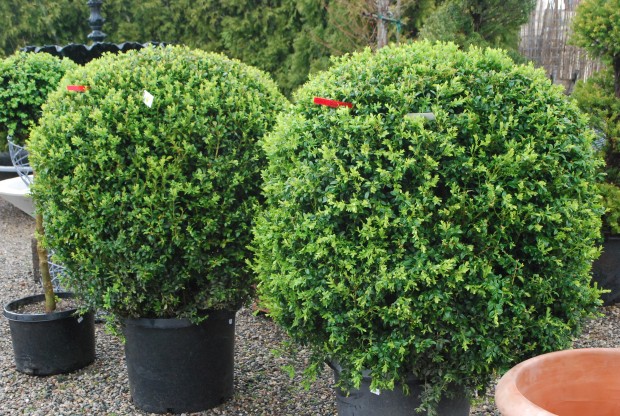 Regular readers of my essays know I have a big love for boxwood. This fairly small and very dense growing evergreen shrub is as versatile as any plant it has been my pleasure to plant. It is tolerant of a wide variety of soil conditions, and it is quite shade tolerant. Its natural growth is charmingly shaggy. It is more than tolerant of pruning-that is, pruning into shapes. Long hedges. Curving and scrolling hedges. Spheres, squares, rectangles, pyramids trapezoids and triangles-boxwood tolerates this too. Boxwood hardy in my zone is also hardy in pots-provided they get proper water and drainage. Boxwood is just about the most obliging plant material on the planet-for those gardeners that are as interested in design as they are in plants.
Regular readers of my essays know I have a big love for boxwood. This fairly small and very dense growing evergreen shrub is as versatile as any plant it has been my pleasure to plant. It is tolerant of a wide variety of soil conditions, and it is quite shade tolerant. Its natural growth is charmingly shaggy. It is more than tolerant of pruning-that is, pruning into shapes. Long hedges. Curving and scrolling hedges. Spheres, squares, rectangles, pyramids trapezoids and triangles-boxwood tolerates this too. Boxwood hardy in my zone is also hardy in pots-provided they get proper water and drainage. Boxwood is just about the most obliging plant material on the planet-for those gardeners that are as interested in design as they are in plants.
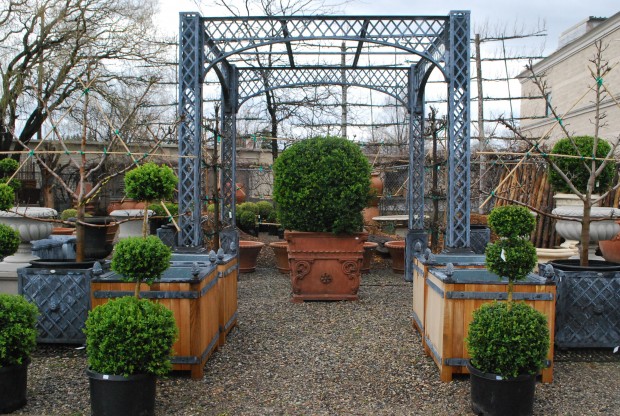 Boxwood flowers are tiny, and anything but showy. The leaves are quite small and unprepossessing. The texture the mass of leaves make-interesting and lively enough. Not massive and sculptural, like the leaves of ligularia, petasites, gunnera, rodgersia or alocasia. Quietly textured. Where boxwood shines has to do with volume, mass, and shape. A hedge of boxwood is satisfyingly regular and pleasing-no matter whether the hedge is natural and shaggy, or closely cropped. A mass of multiple boxwood plants can create shapes of great visual interest. That mass can be pruned flat-like a sheetcake. That mass could be pruned on an angle, or in undulating waves. That mass could narrow at one end, and wide at the other. Boxwood will oblige-whether the landscape design is crispy contemporary, or unabashedly traditional.
Boxwood flowers are tiny, and anything but showy. The leaves are quite small and unprepossessing. The texture the mass of leaves make-interesting and lively enough. Not massive and sculptural, like the leaves of ligularia, petasites, gunnera, rodgersia or alocasia. Quietly textured. Where boxwood shines has to do with volume, mass, and shape. A hedge of boxwood is satisfyingly regular and pleasing-no matter whether the hedge is natural and shaggy, or closely cropped. A mass of multiple boxwood plants can create shapes of great visual interest. That mass can be pruned flat-like a sheetcake. That mass could be pruned on an angle, or in undulating waves. That mass could narrow at one end, and wide at the other. Boxwood will oblige-whether the landscape design is crispy contemporary, or unabashedly traditional.
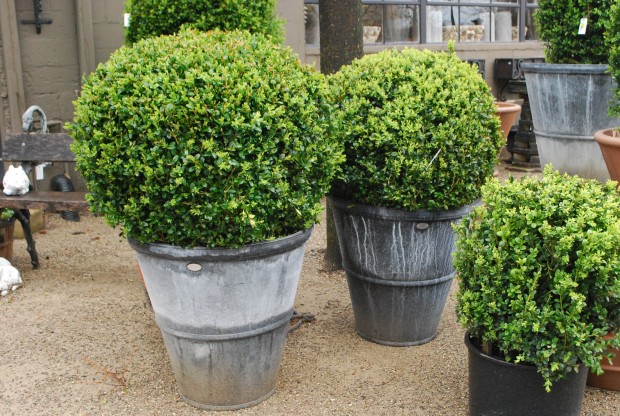 Boxwood grown over a period of time can be shaped into specimen plants-the hallmark of which is the evidence of the pruning hand of a gardener. Pruned boxwood in traditional forms and shapes dates back centuries. Pruned boxwood with a decidedly modern shape-equally as compelling. Why am I so interested in the shapes, the mass, the volume and the texture of boxwood? I am as interested in design as I am interested in plants.
Boxwood grown over a period of time can be shaped into specimen plants-the hallmark of which is the evidence of the pruning hand of a gardener. Pruned boxwood in traditional forms and shapes dates back centuries. Pruned boxwood with a decidedly modern shape-equally as compelling. Why am I so interested in the shapes, the mass, the volume and the texture of boxwood? I am as interested in design as I am interested in plants.
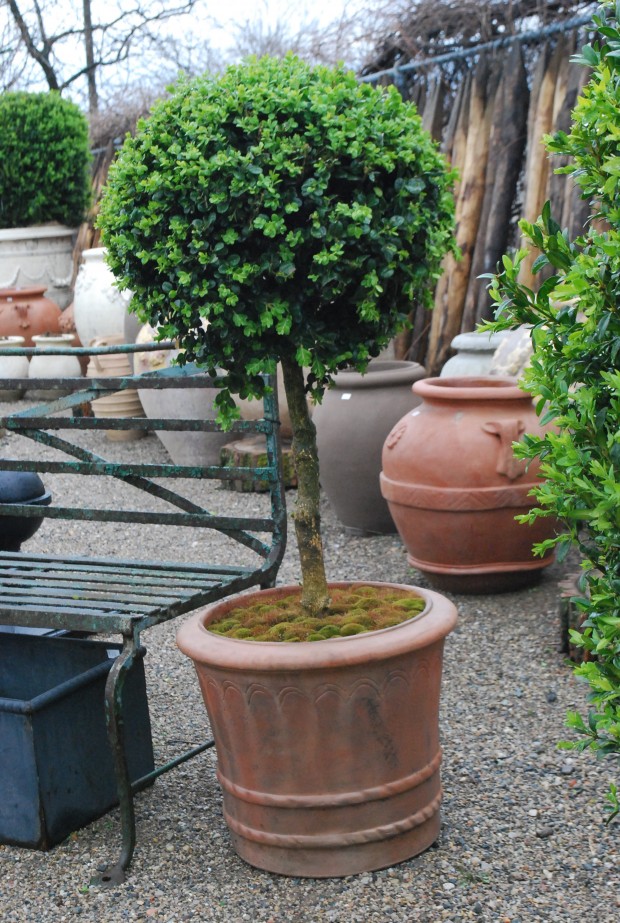 A completely natural and God given landscape-that would be the wild and untouched places in the Upper Peninsula of Michigan. The climax forests. The primeval forests. The roadside weed colonies. What grows out of the tarmac, or next to the railroad tracks. An accident of nature can be the most thrillingly beautiful sight imaginable. Part of why people travel is to experience the natural world-untouched by people- in places all over the earth. An undisturbed stand of birch, a field full of Queen Anne’s Lace, a bog ablaze with marsh marigolds in the spring-all gardening people love these places.
A completely natural and God given landscape-that would be the wild and untouched places in the Upper Peninsula of Michigan. The climax forests. The primeval forests. The roadside weed colonies. What grows out of the tarmac, or next to the railroad tracks. An accident of nature can be the most thrillingly beautiful sight imaginable. Part of why people travel is to experience the natural world-untouched by people- in places all over the earth. An undisturbed stand of birch, a field full of Queen Anne’s Lace, a bog ablaze with marsh marigolds in the spring-all gardening people love these places.
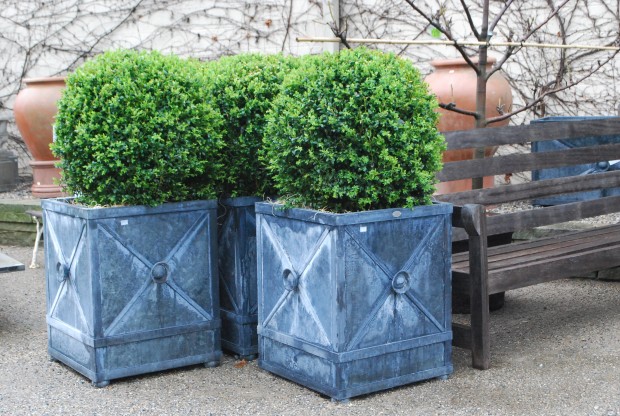 That said, I am at heart, a designer. I favor landscapes that make a statement from the heart, the head, and the hand. People can be heavy handed, but they can also be kind, patient, observing, caring, daring, brilliant, and nurturing. I am interested in the choices gardeners make. I am also very interested in the choices designers make. Choices gardeners make provide for astonishingly different outcomes. Designed landscape spaces are structured. They may be structured around use, and traffic. They may be structured with beauty in mind. They may be structured for a particular season, a favored color, a sense of visual balance, for mystery, for fun, for meditation. They may be structured around a very personal and particular point of view.
That said, I am at heart, a designer. I favor landscapes that make a statement from the heart, the head, and the hand. People can be heavy handed, but they can also be kind, patient, observing, caring, daring, brilliant, and nurturing. I am interested in the choices gardeners make. I am also very interested in the choices designers make. Choices gardeners make provide for astonishingly different outcomes. Designed landscape spaces are structured. They may be structured around use, and traffic. They may be structured with beauty in mind. They may be structured for a particular season, a favored color, a sense of visual balance, for mystery, for fun, for meditation. They may be structured around a very personal and particular point of view.
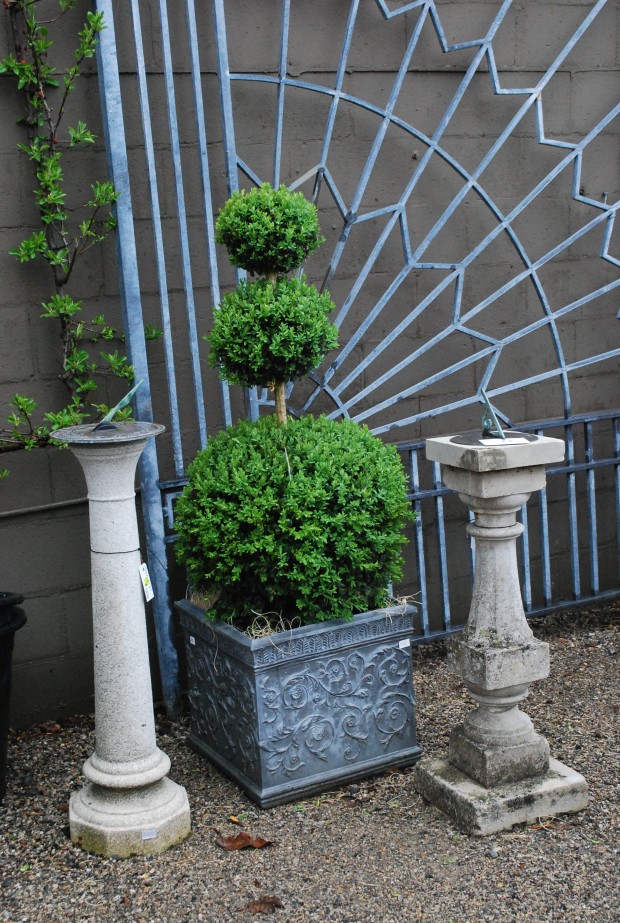 Beautifully structured landscapes transform an idea or thought into a picture. I would explain this idea in this way. Many people could not draw a portrait, but every person is able to recognize the face of an acquaintance or friend. Many people recognize the faces of people they have not seen for years, or people they only know slightly. Visual recognition is a very powerful human attribute. We all have it. Designers appeal to visual recognition. The delight that comes from visual recognition-extraordinary. Design that manages to engage all of the senses is great design.
Beautifully structured landscapes transform an idea or thought into a picture. I would explain this idea in this way. Many people could not draw a portrait, but every person is able to recognize the face of an acquaintance or friend. Many people recognize the faces of people they have not seen for years, or people they only know slightly. Visual recognition is a very powerful human attribute. We all have it. Designers appeal to visual recognition. The delight that comes from visual recognition-extraordinary. Design that manages to engage all of the senses is great design.
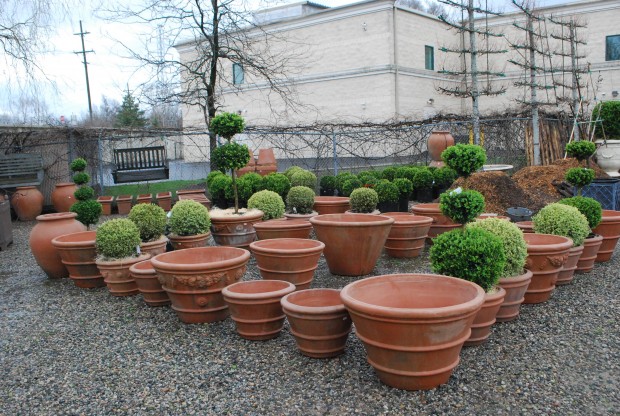 We had a number of boxwood topiaries delivered a few days ago, from a grower on the West Coast. We do not order plants over the phone, sight unseen, via an availability list. Rob flies out there every winter. He walks the fields. He chooses plants that he feels beautifully represents his point of view, as a designer. He discusses the pruning, the care. His buying-incredibly personal.
We had a number of boxwood topiaries delivered a few days ago, from a grower on the West Coast. We do not order plants over the phone, sight unseen, via an availability list. Rob flies out there every winter. He walks the fields. He chooses plants that he feels beautifully represents his point of view, as a designer. He discusses the pruning, the care. His buying-incredibly personal.
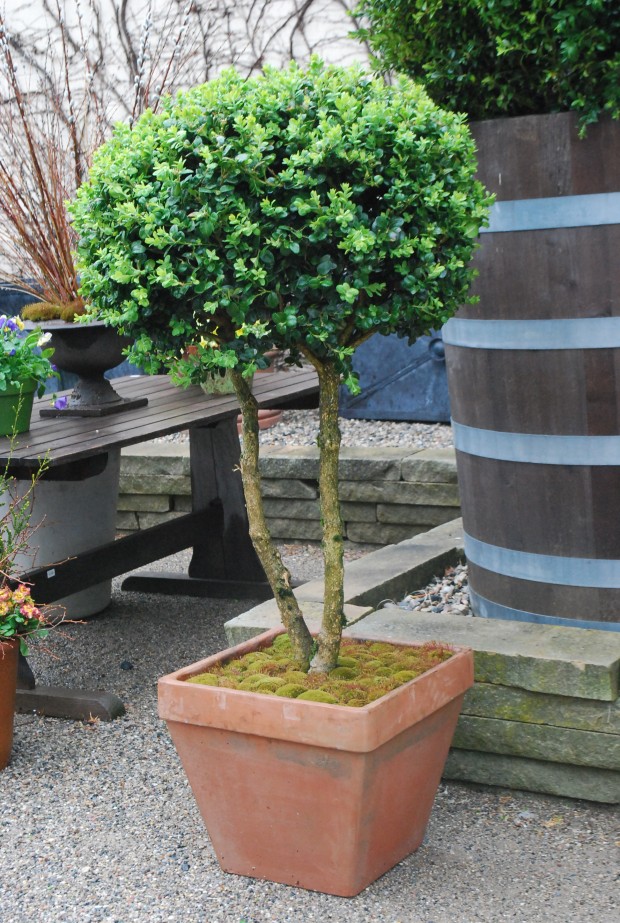 Any great design bears the mark and hand of a client, empowered by the hand of a skilled designer. I will say that the design of my landscapes is primarily about a relationship, forged. A passionate client, and a passionate designer makes for landscapes of note. I feel very confident saying that great landscape design springs from a relationship marked by mutual passion and respect. I have a great respect for the boxwood topiaries that Rob chose to buy. I feel completely confident that should I recommend to client that they invest in an old plant with a history, they will not be disappointed. There is a provenance in which to trust.
Any great design bears the mark and hand of a client, empowered by the hand of a skilled designer. I will say that the design of my landscapes is primarily about a relationship, forged. A passionate client, and a passionate designer makes for landscapes of note. I feel very confident saying that great landscape design springs from a relationship marked by mutual passion and respect. I have a great respect for the boxwood topiaries that Rob chose to buy. I feel completely confident that should I recommend to client that they invest in an old plant with a history, they will not be disappointed. There is a provenance in which to trust.
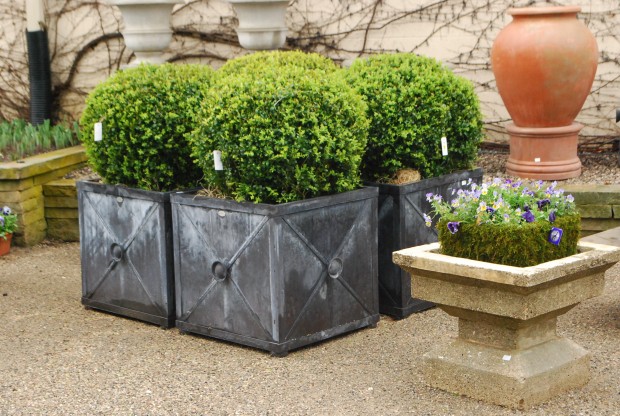 The intense rain this afternoon-so great for these newly relocated plants. The new growth is glowing. My clients who asked that I draw the locations for 100 boxwood in pots in his landscape-this post is dedicated to them.
The intense rain this afternoon-so great for these newly relocated plants. The new growth is glowing. My clients who asked that I draw the locations for 100 boxwood in pots in his landscape-this post is dedicated to them.
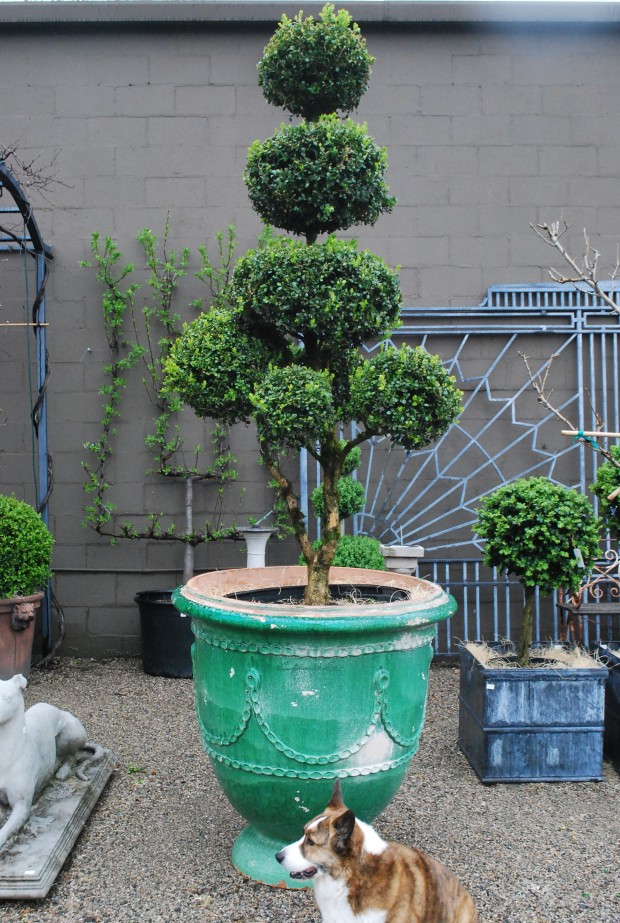 This boxwood topiary-astonishing in its age and size. Rob tells me it reminded him of Thomas Church. I can see why he fell for it. There is the sure evidence of a patient, committed, and loving hand. We make extraordinary plants like this one available to gardeners. But more than that, we design.
This boxwood topiary-astonishing in its age and size. Rob tells me it reminded him of Thomas Church. I can see why he fell for it. There is the sure evidence of a patient, committed, and loving hand. We make extraordinary plants like this one available to gardeners. But more than that, we design.
I love the look of boxwood balls, either lining a path or in containers such as urns. What I don’t like is how painstakingly slow they are to grow. I
n New Zealand they are now selling a small coprosma which grows naturally into a ball shape, and just needs very light clipping to keep it neat. It is being marketed here as Coprosma Golfball, and there are different colour options too.
If we have it in our tiny far-flung corner of the world, then I’m sure it must be available elsewhere too – maybe under a different name 🙂
I, too, am a boxwood fan as are the deer who love to nibble all winter on newer, tender boxwoods. The plants do come back after being ripped of their greenery, but the regrowth takes a few weeks once spring has sprung.
I particularly like your containers. The metal containers with the “x” fronts and the metal bucket containers are perfect. Are they available through your store?
Dear Molly, the boxes ae from my company Branch. http://www.thebranchstudio.com. Yes, we do sell them at the shop. Thanks, Deborah
Oops – correction. It is Pittosporum Golfball, not coprosma. Sorry about the mistake (I always mix those two up duh)
Dear Lynne, I do not think pittosporum in hardy in my zone-lucky you! Thanks, Deborah
I love your site…the boxwood plants are beautiful…..we have 4 along side the patio….I am wondering can I plant the boxwood in a large pot and they will survive all year round…we live in Centerville,Ohio..I see boxwood plants in containers at the mall and other business…thanks you Judy
Judy, For sure I would give it a try-boxwood is hardy in pots, as long as you look after them. Thanks, Deborah
Great essay! I too love the versatility of boxwoods. Thanks, DiAnne
DiAnne, Thanks. There is plenty to like about them, isn’t there? Deborah
Well, Deborah, what an elegant essay on Boxwood. I could not agree more and could not put it any more eloquently. Plant structure is important — the various natures are pertinant to design. Rob is fortunate to be a buyer and roam favored growers for such favored specimens! What a joy. Thank you for your pictures and ongoing conversations regarding landscaping and plant materials. If I lived in your area, you would be my “go-to” girl.
I hope this year is a good one for your and yours.
Thanks for your letter, Katherine. I do so appreciate and enjoy good design and good plants-I am sure you do too. I hope you have a great year too. Deborah
Love your energy in writing and keen eye for detail. Keep on looking for the forgotten hero’s like BOXWOOD.
Thanks for your letter, Greg. What boxwood can do for a garden makes it well worth considering. Deborah
Thanks so much for your quick reply…I will buy some boxwood and try them in my big pots….thanks…Judy
Hello Deborah, love this post on box woods. I too am a lover of them. I have many in front of my home and on the side. So easy to maintain a clean neat look. I live in southeastern Wisconsin and would like to put some in pots. Will they survive the winter weather here?
Love all your posts, you are a very talented woman!
Laura, Evergreens in pots require vigilant care-but they will survive. Be sure you choose a hardy species or cultivar, and don’t place them in open and too windy sites. Thanks, Deborah
Here in Europe, I hardly dare look at my boxwoods too closely for fear of spotting signs of box blight or the horrible insect that are both killing off boxwood plantings all over the place.
I hope you will be spared that fate. There’s really no good replacement.
I have read much about boxwood blight-but I have not seen it here-yet. I do hope someone can find a cure.
I also love boxwoods and am lusting after some of the ones in your post. I do have a number of common hardy ones that have come out of Chicago propagating programs, but also a one from Winston Churchill’s garden and one from Rosemary Verey, both via the old Heronswood Nursery. Those connections make them even more special. I am also growing “Morris Midget” which is a tiny boxwood that is as cute as its namesake.
And though I don’t know the scientific name for it, there is a condition where some people have no facial recognition ability. I know this because I know someone who has it. She depends on voice, walking style etc. The artist Chuck Close has it.
Linda, I looked it up. It is called prosopagnosia- I had never heard of it. Nor had I heard of Morris Midget boxwood. It sounds great! Thanks, Deborah